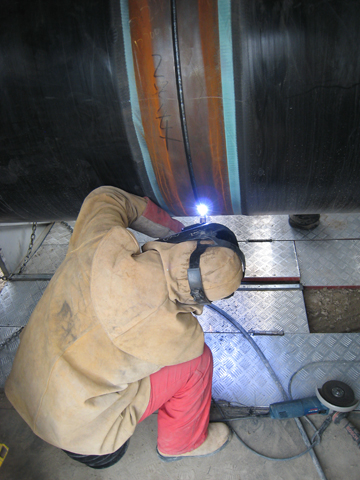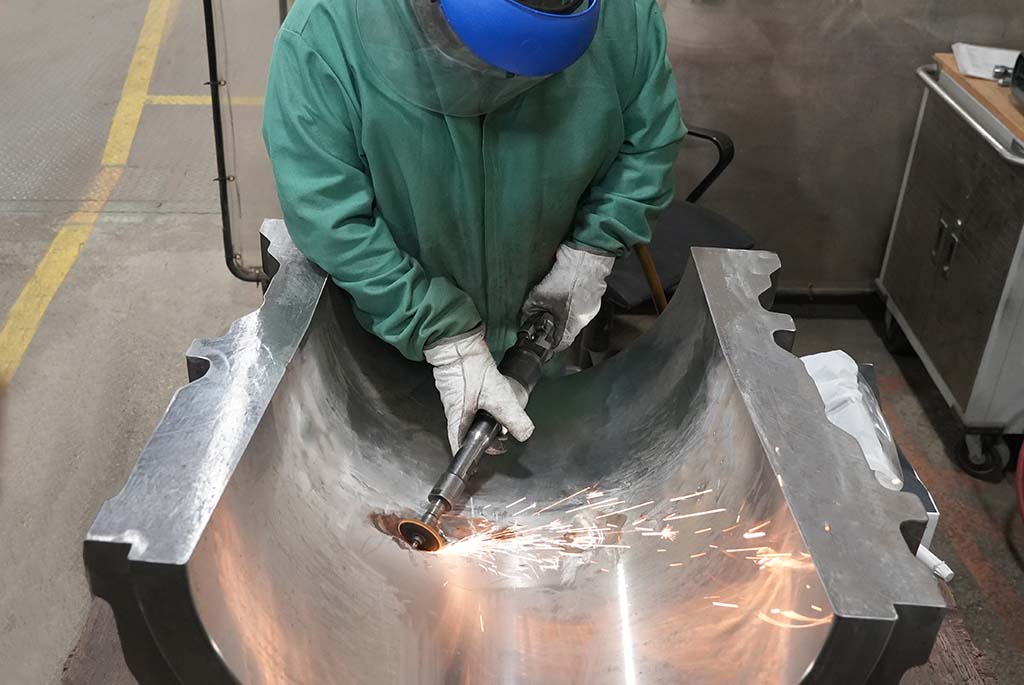Usual Welding Repair Service Issues and Just How to Address Them Successfully
Welding repair work typically run into a series of concerns that can endanger the stability of the end product. Common problems consist of inadequate penetration, porosity, and misalignment, to name a few. Each problem presents distinct obstacles that call for details techniques for resolution. Comprehending these concerns is important for welders aiming to boost their outcomes and abilities. This discussion will certainly check out these typical welding repair issues and effective techniques to resolve them.
Poor Infiltration
Inadequate infiltration occurs when the weld metal fails to fully fuse with the base product, leading to weak joints and prospective architectural failures. This issue commonly comes from insufficient warmth input, wrong electrode angle, or improper welding rate. Welders may encounter insufficient infiltration as a result of a miscalculation of the necessary parameters for a certain material thickness or type. In addition, contamination on the base material's surface area can impede effective bonding, intensifying the trouble. To attend to inadequate infiltration, welders ought to assure ideal settings on their tools and maintain a tidy work surface area. Normal inspection of welds is recommended to determine any kind of shortages early, permitting timely corrections and the prevention of compromised architectural honesty in welded settings up.
Porosity
Porosity is a common problem in welded joints that shows up as small gas bubbles caught within the weld steel. This flaw can endanger the integrity of the weld, bring about decreased strength and prospective failing under anxiety. Belgrade. Porosity normally emerges from contamination, wetness, or inappropriate welding strategies, which enable gases to get away into the molten weld swimming pool. To resolve porosity, welders should ensure appropriate surface prep work, keep a clean working atmosphere, and use appropriate welding parameters. Additionally, choosing the ideal filler material and securing gas can reduce gas entrapment. Routine inspection and screening of welds can aid identify porosity early, guaranteeing prompt corrective activities are taken, thereby preserving the top quality and reliability of the bonded framework
Imbalance
Misalignment in welding can arise from numerous variables, including incorrect arrangement and thermal development. Recognizing the root causes is vital for reliable resolution. Several modification strategies are available to realign components and ensure architectural honesty.
Reasons for Imbalance
Welding imbalance frequently comes from a selection of underlying concerns that can compromise structural honesty. One key reason is inappropriate fit-up of parts prior to welding, which can lead to spaces and irregular surfaces. Variants in thermal growth during the welding process can also lead to distortion, particularly if the products being signed up with have various coefficients of growth. In addition, poor clamping and fixturing might fail to hold parts safely in area, resulting in movement during welding. Badly maintained devices, including welding machines and tools, might introduce disparities in the weld grain, additional adding to imbalance. Lastly, driver error, stemming from inadequate training or experience, can additionally play a significant role in developing misaligned welds.
Modification Techniques Available
Resolving misalignment successfully needs a combination of corrective strategies tailored to the certain problems available. One typical technique is making use of jigs or fixtures to hold elements in the right placement throughout welding, making sure consistent positioning. Additionally, pre-heating the materials can help in reducing distortion and boost fit-up. For significant imbalance, mechanical realignment strategies, such as using hydraulic jacks or clamps, can be employed to remedy the setting before welding. Post-weld heat therapy may also be needed to relieve stress and anxieties brought on by imbalance. Ultimately, mindful evaluation and adjustment throughout the setup stage can protect against imbalance issues from ending up being substantial problems, advertising a smoother welding procedure and boosting overall structural integrity.
Distortion
Distortion is a common challenge in welding that can arise from numerous elements, including irregular heating & cooling. Understanding the root causes of distortion is vital for implementing effective prevention methods. Addressing this issue not only boosts structural stability yet additionally improves the total high quality of the weld.
Root causes of Distortion
When subjected to the extreme heat of welding, products frequently undergo changes that can bring about distortion. This phenomenon mainly arises from thermal development and contraction throughout the welding procedure. As the weld area warms up, the product broadens; upon air conditioning, it contracts, which can create inner tensions. On top of that, uneven heating across a workpiece can aggravate click to read these stress and anxieties, resulting in bending or flexing. The sort of material also plays a significant role; metals with differing thermal conductivity and coefficients of expansion might react in a different way, bring about unpredictable distortions. Additionally, bad joint style and insufficient fixturing can add to imbalance during welding, boosting the probability of distortion. Understanding these causes is important for reliable welding fixing and prevention approaches.
Prevention Techniques
Efficient avoidance methods for distortion during welding concentrate on managing warmth input and guaranteeing correct joint design. Preserving a constant warm input aids to decrease thermal expansion and contraction, which can lead to distortion. Using strategies such as pre-heating the workpiece can also minimize the temperature slope, advertising uniform heating. Additionally, selecting proper joint styles, such as T-joints or lap joints, can enhance security and minimize tension focus. Executing appropriate fixturing to secure the work surfaces in position additionally help in preserving placement throughout the welding procedure. Ultimately, staggered welding series can distribute heat extra uniformly, stopping local distortion. By using these methods, welders can substantially lower the probability of distortion and enhance the total quality of their welds.
Cracking
Splitting is a common issue come across in welding repairs, usually resulting from various factors such as incorrect air conditioning rates, product selection, or insufficient joint prep work. The event of cracks can considerably compromise the stability of the weld, causing prospective failures throughout operation. To resolve this problem, welders have to initially evaluate the origin, guaranteeing that products work and appropriately selected for the specific application. Furthermore, regulating the cooling price during the welding procedure is crucial; rapid cooling can induce stress and lead to breaking. Correct joint design and prep work additionally contribute to minimizing the threat. Executing these approaches can improve weld high quality and resilience, eventually lowering the possibility of splitting in finished weldments.

Insufficient Combination
A significant concern in welding repair work is insufficient fusion, which happens when the weld metal does not effectively bond with the base product or previous weld passes - Montana Mobile Welding and Repair Belgrade Fabrication. This defect can bring about weaknesses in the joint, possibly endangering the integrity of the bonded framework. Elements contributing to incomplete combination consist of insufficient warmth input, improper welding method, and contamination of the surface areas being signed up with. To resolve this issue effectively, welders need to guarantee appropriate pre-weld cleaning and surface area preparation, along with change their welding criteria to achieve sufficient infiltration and combination. Routine assessment throughout the welding process can additionally assist identify insufficient fusion early, permitting timely rehabilitative steps to boost the general high quality of the weld
Overheating
While welding repair work can boost structural honesty, overheating offers a significant difficulty that can cause product deterioration. Extreme heat throughout welding can alter the mechanical properties of metals, resulting in reduced stamina, raised brittleness, and warping. see this site This sensation is specifically critical in high-stress applications where structural integrity is extremely important. Recognizing getting too hot can include aesthetic inspections for staining or distortion, as well as monitoring temperature level throughout the welding procedure. To minimize the threats associated with getting too hot, welders must utilize ideal techniques, such as regulating heat input, readjusting travel rate, and making use of ideal filler products. Additionally, carrying out pre- and post-weld heat treatments can aid bring back material residential or helpful site commercial properties and boost the total top quality of the repair service, guaranteeing long-lasting efficiency and safety.
Regularly Asked Questions
What Are the Common Signs of a Welding Problem?

Exactly How Can I Test My Welds for Quality?
To check welds for top quality, one can use visual assessments, ultrasonic testing, and radiographic methods. Each method guarantees structural integrity, determines defects, and confirms adherence to defined criteria, ultimately boosting the dependability of the bonded joints.
What Security Preventative Measures Should I Take While Welding?
When welding, one ought to focus on safety by wearing proper personal safety tools, ensuring correct ventilation, securing flammable products away, maintaining a clean work area, and knowing surroundings to protect against injuries and mishaps.
Can I Fix a Weld Without Renovating the Entire Joint?
Fixing a weld without redesigning the whole joint is feasible, depending upon the damages (Welding). Methods such as grinding, including filler product, or using a welding process can effectively attend to certain flaws while maintaining the bordering structure
What Tools Are Crucial for Effective Welding Fixes?
Essential devices for effective welding repair services consist of a welding equipment, wire brush, grinder, protective gear, clamps, and filler materials. Each device plays a vital duty in ensuring quality and safety and security during the repair process. Porosity usually arises from contamination, dampness, or incorrect welding techniques, which allow gases to escape into the liquified weld swimming pool. Badly kept equipment, including welding makers and devices, may present incongruities in the weld grain, more adding to imbalance. When subjected to the intense warmth of welding, materials frequently go through changes that can lead to distortion. Splitting is a typical issue run into in welding fixings, frequently resulting from numerous variables such as incorrect cooling prices, material option, or insufficient joint preparation. A substantial problem in welding repair services is incomplete fusion, which takes place when the weld metal does not appropriately bond with the base product or previous weld passes.
Comments on “Key methods to deal with warping in Montana Mobile Welding and Repair Belgrade”